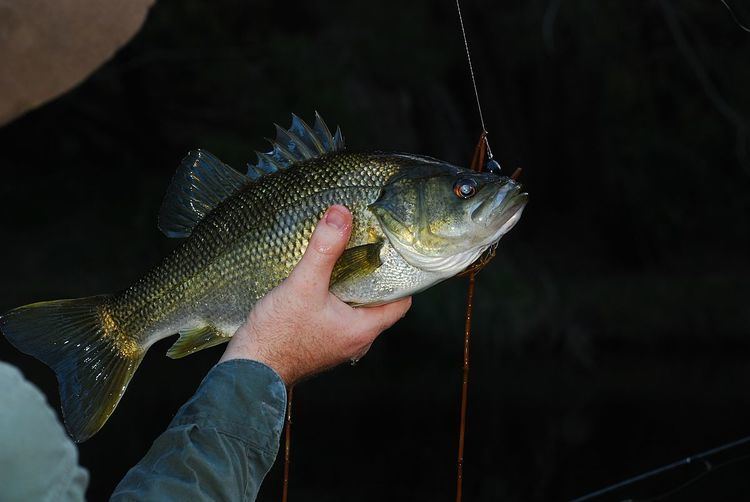 | ||
A surface lure is a fishing lure designed to waddle, pop, lock, drop, pulse, twitch or fizz across the surface of the water as it is retrieved, and in doing so imitate surface prey for fish such as mice, lizards, frogs, cicadas, moths and small injured fish. A typical surface lure has a solid body made out of wood or plastic, carries one or two treble hooks, and has an eyelet at the front of the lure body to attach the fishing line. Waddlers get their action from a scooped metal dish attached to the front of the lure body. Poppers get their action from a cupped face carved or molded into the front of the lure body. Fizzers get their action both from the fisherman manipulating the lure with the fishing rod and from one or more blades attached to the lure body, that spin when the lure is pulled and create a fizzing noise said to imitate the buzzing wings of a drowning insect.
Sizeable fish can create a sudden, noisy and spectacular explosion when they take a surface lure, usually giving the fisherman a fright in the process. Catching fish on surface lures is therefore considered a fairly exciting form of fishing.
